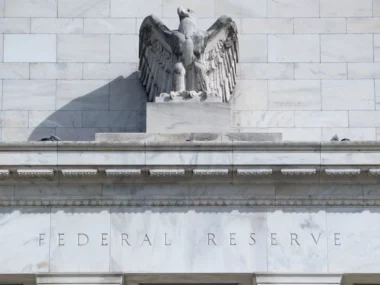UK government borrowing costs have sharply decreased after an unexpected drop in inflation in both the UK and the US fueled expectations of potential interest rate cuts by central banks.
The yield on key UK government debt fell below 4.8%, retreating from last week’s 16-year high of nearly 4.9%. This follows data showing inflation eased to 2.5% in December, down from 2.6% the previous month.
The drop has alleviated some pressure on Chancellor Rachel Reeves, whose Budget policies had been criticized for contributing to recent market instability. Bond yields had surged to their highest since 2008, driven by concerns over the UK’s economic outlook and rising borrowing costs.
Wednesday’s inflation figures, marking the first decline in three months, appeared to provide some relief to the markets.

Analysts noted that the easing of inflation would give the Bank of England more flexibility to consider further rate cuts to boost the economy. Following the inflation news, investors raised expectations for an interest rate cut next month, with some also anticipating a second cut by the end of the year.
These expectations were further supported by US inflation data, which indicated a slowdown in underlying price increases. The US Labor Department’s monthly report showed overall inflation rose to 2.9% in December, up from 2.7%. However, attention was on core inflation, which excludes food and energy costs and is seen as a clearer indicator of long-term trends. Core inflation unexpectedly fell from 3.3% to 3.2%, sparking hopes that the US Federal Reserve may reduce interest rates in the coming months.
The positive data led to a surge in US share prices and a drop in yields, sending ripples through global bond markets, including the UK, where borrowing costs had been rising due to US economic dynamics. Yields on German government debt also decreased, and the pound rose to around $1.22.
Despite this, Susannah Streeter, head of money and markets at Hargreaves Lansdown, cautioned that UK borrowing costs remain high. “While government borrowing costs are edging down, the yield on 10-year gilts is still above 4.8%, reflecting concerns about Britain’s debt burden,” she explained.










